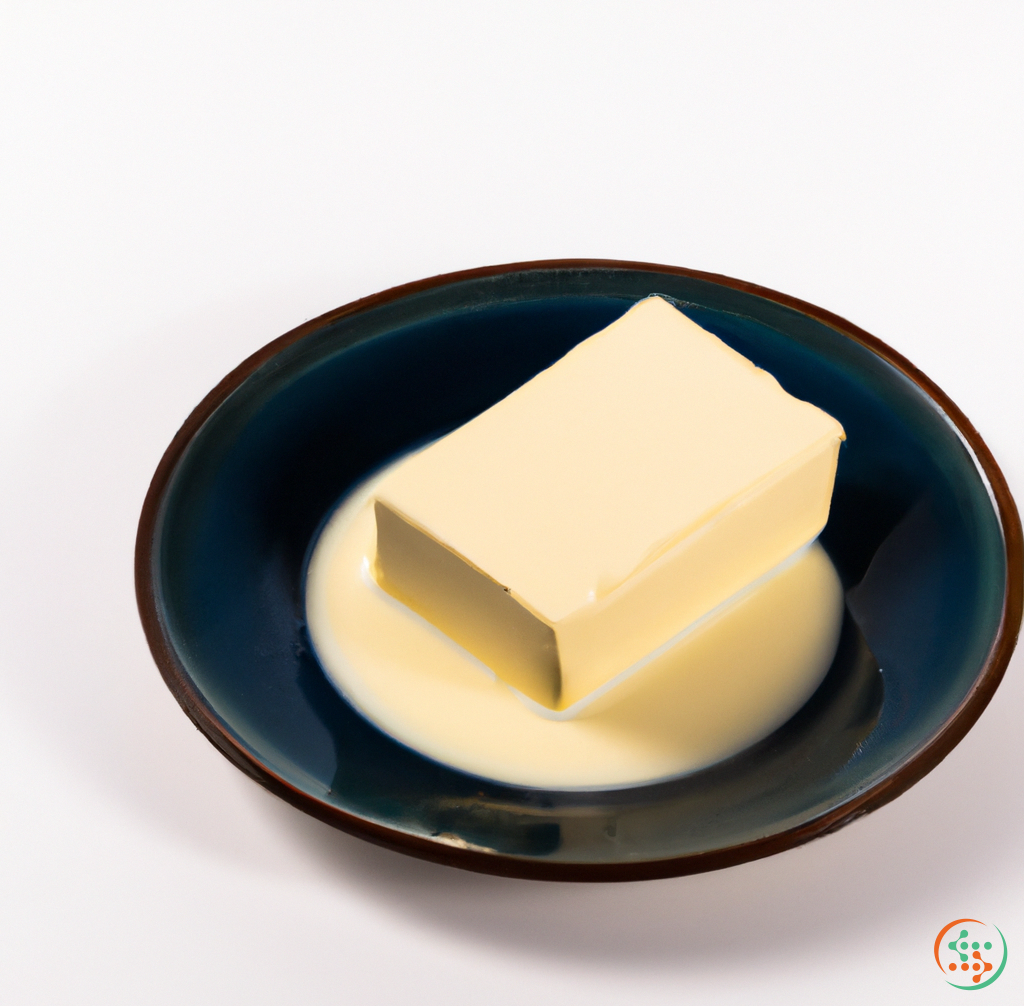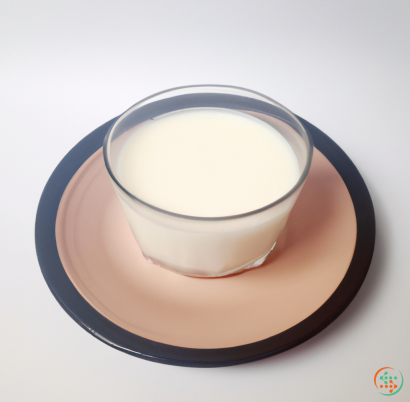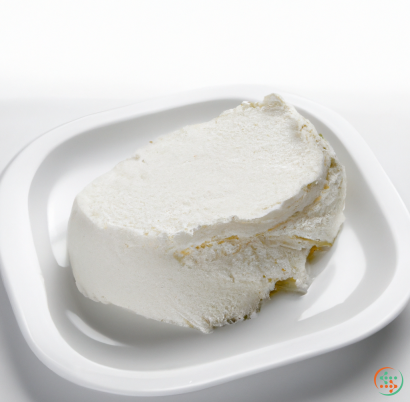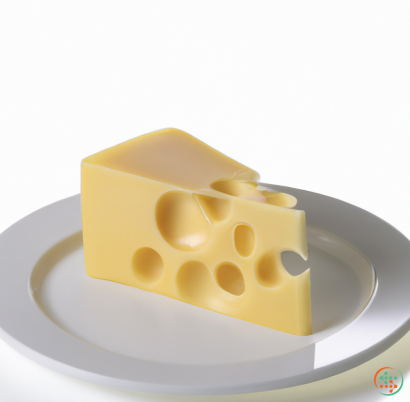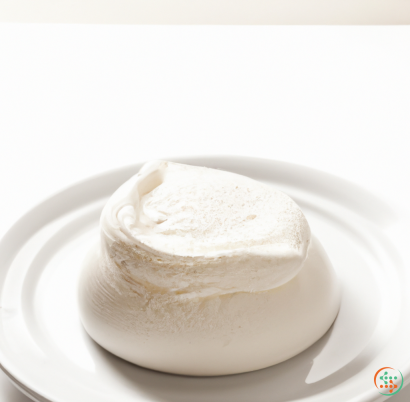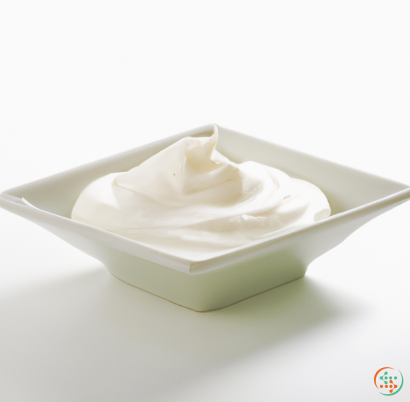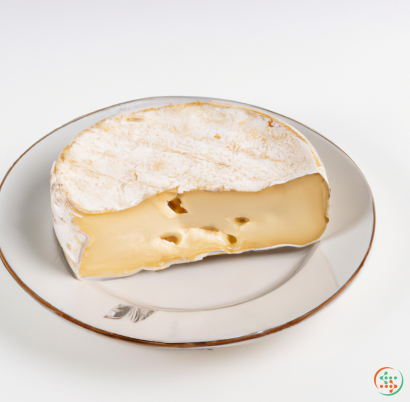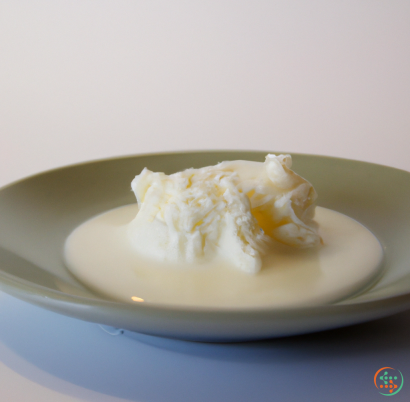Buttermilk
Buttermilk has been a staple in many cultures for centuries, with each culture having its own unique spin on this timeless liquid. At its most basic level, buttermilk is a fermented dairy product made from the liquid residue of churning butter. Buttermilk has a thick, creamy texture and tangy, slightly sour flavor and aroma. It is ideal for baking, cooking, and as a refreshing, probiotic-rich drink.
Buttermilk has a long and winding history. The term is believed to have originated in Britain in the 1700s, when the naturally occurring lactic acidic bacteria found in butter would cause butter to curdle into a thick liquid called "butter-milk", which would then be consumed as a beverage. This tradition eventually spread to the United States, Canada, and many other countries, who each developed their own variations of the product.
In the United States, buttermilk usually refers to millk that has been soured through the use of lactic acid bacteria such as lactococcus lactis, lactobacillus bulgaricus, and leuconostoc citrovorum. The bacteria feeds on the natural sugars and starches in the milk, producing lactic acid which in turn curdles the milk and gives it a thick texture and tangy flavor. Buttermilk can also be produced through various other methods, including culturing heated milk, or adding a commercially available starter culture to the milk.
Buttermilk is widely used in cooking and baking. The acidity of the buttermilk helps break down gluten proteins, resulting in tender and fluffy cakes, muffins, scones, and pancakes. It also adds moisture and flavor to savory dishes such as sauces, salad dressings, and marinades. Buttermilk is commonly used in the Southern United States to make biscuits, cornbread, and fried chicken.
Buttermilk nutrition is surprisingly rich in both proteins and healthy fats as well as certain vitamins and minerals. Each 1 cup serving contains roughly 90 calories, 8 grams of protein and 8 grams of fat, along with several essential vitamins and minerals. While the nutritional profile of traditional buttermilk is largely the same as low-fat buttermilk, many people find the full-fat variety to be creamier and more flavorful.
Buttermilk is a versatile ingredient and can be readily swapped in place of other dairy products such as yogurt, sour cream, or even heavy cream. It’s also an ideal substitute for regular milk in recipes as its natural acidity helps to tenderize ingredients, resulting in a flavorful and light finished product. For example, you could use buttermilk in place of regular milk in pancakes and waffles for a slightly tangy and extra fluffy end result.
In recent years, buttermilk hasn’t simply been limited to baking and cooking recipes; it is increasingly being used as a drink as well. It is rich in probiotics, the beneficial bacteria which promotes healthy digestion and immunity, and has a naturally sweet and creamy taste. Non-dairy versions of buttermilk, such as almond or oat milk, are also becoming increasingly popular due to their nutty, subtly sweet flavor.
Buttermilk definitely lives up to its reputation as a versatile ingredient, boasting a range of interesting flavors and textures. Whether you’re using it to enhance your favorite dessert, drink up its probiotic benefits, or try something new and creative, buttermilk is sure to please.
Buttermilk: From the Dairy Cow to Your Dinner Table
What is buttermilk? The thick, creamy liquid is most commonly found in baking recipes, particularly biscuits, pancakes, and even various batters for frying foods. You may be surprised to find that the versatile ingredient has a long and fascinating history, from its traditional production methods to its modern applications on dinner tables around the world. In this article, we'll take a look at the journey from dairy cow to dinner plate when it comes to buttermilk.
Buttermilk's History
The origin of buttermilk dates back centuries. For generations, the excess liquid left over during the process of churning cream into butter was given a unique identity of its own. This liquid, with a slightly acidic and sour taste, was referred to as "buttermilk" in Europe and other parts of the world. The popularity of this milk-like product only increased. In the United States, German immigrants popularized the making of a slightly different form of butter milk based off of recipes they brought with them.
In more recent times, the production of buttermilk has changed dramatically. In the early 1900's, certain manufacturers began producing commercially available buttermilk using pasteurized cows' milk and a special bacteria culture. In modern times, most buttermilk sold in supermarkets is a manufactured product made with skim milk that has been acidified naturally or with acids such as lactic acid or lemon juice.
From Farm to Dairy
On many dairy farms, cows are milked twice a day, typically in the morning and evening, before the milk is collected for processing and sale. Most dairy farms will have a designated area for milking the cows, equipped with specialized equipment like a milking machine, a stainless steel tank for the collection of the raw milk, and a refrigeration unit for chilling the milk quickly.
The raw milk is piped from the collection tank to a holding tank and then to a centralized plant for pasteurization. Pasteurization is a heat-based process used to kill off any potential pathogens. The milk is heated up to a temperature of 164 degrees Fahrenheit for 15-20 seconds and cooled down quickly. This process helps to extend the shelf life of the milk, making it safe for consumers to consume.
Once the milk is pasteurized it undergoes homogenization. Homogenization is a process that breaks up the fat compounds in the milk, which reduces the size of the fat globules so that they do not separate from the skim portion. This allows the fat to be evenly distributed throughout the milk, ensuring an even texture and increasing the shelf life of the product.
The Production of Buttermilk
After the pasteurization and homogenization of the cows' milk, it is time to begin the production of buttermilk. The process typically starts by adding a lactic acid producing culture to the skimmed-off portion of the homogenized milk. The culture is made up of lactic acid bacteria, like thermophilic starter, which multiplies and ferments the lactose in the milk. This process produces lactic acid, which helps to create the sour flavor and acidic nature of buttermilk. The buttermilk mixture is kept at an elevated temperature to help the fermentation process.
The mixture is then refrigerated, allowing the cream to separate from the liquid. The cream is isolated and can be used to make other products or can be churned into butter. The remaining liquid is what we know as buttermilk!
Packaging and Distribution
Once the buttermilk is produced, it is packaged and distributed. Buttermilk is most commonly found in supermarkets in pre-packaged containers, such as plastic jugs, paper cartons, and even recyclable cans. These containers are chosen for their convenience and ease of use, making it easy to pour the buttermilk into baking recipes.
Buttermilk can be transported using tank trucks, which are temperature-regulated trucks designed to transport large volumes of liquids. The tank trucks maintain constant temperature levels (around 40 degrees Fahrenheit), ensuring that the buttermilk remains safe and fresh, while also making sure that it arrives at its destination intact and at the correct temperature, without degradation in quality.
Using Buttermilk in Recipes
Buttermilk is an incredibly versatile ingredient, and it isn't limited to just baking. The acidic nature of buttermilk helps to tenderize and add flavor to marinades and marinated meats, making it ideal for chicken, pork and steak dishes. Buttermilk is also popular for its variety of uses in baking, from pancakes to biscuits; the acid in buttermilk interacts with baking soda and creates the perfect texture, with light and airy end products.
Conclusion
Buttermilk is an important and versatile ingredient that has been consumed for centuries. At its very core, buttermilk is simply the liquid left over from churning cream into butter. It's a delicious, creamy liquid with a slightly acidic flavor that can be used in a wide range of recipes. From the cows that produce the raw milk to the dedicated truckers who take the finished product to your local grocery store, it's amazing to think of the journey that a simple glass of buttermilk makes before getting to your dinner table.
| Vitamin A | 0.047 mg | |
| Beta-Carotene | 0.007 mg | |
| Vitamin D | 0.0013 mg | |
| Vitamin D3 | 0.0013 mg | |
| Vitamin E | 0.07 mg | |
| Vitamin K | 0.3 ug | |
| Vitamin B1 | 0.05 mg | |
| Vitamin B2 | 0.17 mg | |
| Vitamin B3 | 0.09 mg | |
| Vitamin B4 | 0.0146 grams | |
| Vitamin B5 | 0.38 mg | |
| Vitamin B6 | 0.04 mg | |
| Vitamin B9 | 0.005 mg | |
| Vitamin B12 | 0.46 ug |
| Calcium | 0.115 grams |
Daily Value 1.3 g
|
| Iron | 0.03 mg |
Daily Value 0.018 g
|
| Magnesium | 0.01 grams |
Daily Value 0.4 g
|
| Phosphorus | 0.085 grams |
Daily Value 1.25 g
|
| Potassium | 0.135 grams |
Daily Value 4.7 g
|
| Sodium | 0.105 grams |
Daily Value 2.3 g
|
| Zinc | 0.38 mg |
Daily Value 0.011 g
|
| Copper | 0.03 mg |
Daily Value 0.9 mg
|
| Selenium | 0.0037 mg |
Daily Value 0.055 mg
|
| Tryptophan | 0.041 grams | |
| Threonine | 0.137 grams | |
| Isoleucine | 0.166 grams | |
| Leucine | 0.304 grams | |
| Lysine | 0.269 grams | |
| Methionine | 0.084 grams | |
| Cystine | 0.02 grams | |
| Phenylalanine | 0.166 grams | |
| Tyrosine | 0.162 grams | |
| Valine | 0.21 grams | |
| Arginine | 0.092 grams | |
| Histidine | 0.097 grams | |
| Alanine | 0.108 grams | |
| Aspartic Acid | 0.275 grams | |
| Glutamic Acid | 0.721 grams | |
| Glycine | 0.064 grams | |
| Proline | 0.317 grams | |
| Serine | 0.193 grams |
| Total Sugars | 4.9 grams |
per 100g
|
| Caproic acid (6:0) | 0.08 grams |
|
| Caprylic acid (8:0) | 0.08 grams |
|
| Capric acid (10:0) | 0.08 grams |
|
| Lauric acid (12:0) | 0.08 grams |
|
| Myristic acid (14:0) | 0.3 grams |
|
| Palmitic acid (16:0) | 0.84 grams |
|
| Stearic acid (18:0) | 0.37 grams |
|
| Butyric acid (4:0) | 0.08 grams |
|
| Total Saturated fatty acids: | 1.91 g | |
| Oleic acid (18:1) | 0.83 grams |
|
| Total Monounsaturated fatty acids: | 0.83 g | |
| Linolenic acid (18:3) | 0.08 grams |
|
| Linoleic acid (18:2) | 0.12 grams |
|
| Total Polyunsaturated fatty acids: | 0.2 g | |
| Cholesterol | 0.01 grams |
|
| Total Sterols: | 0.01 g | |
